Gyeongju
-
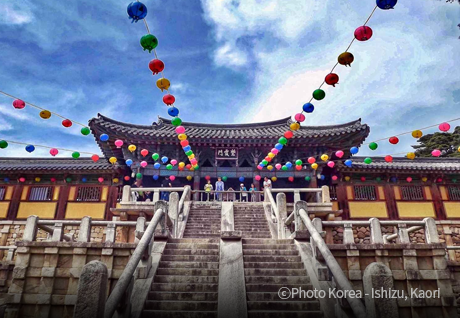
-
Seokguram Grotto and Bulguksa Temple
Seokguram Grotto and Bulguksa Temple are iconic heritage sites from the golden era of the Unified Silla Dynasty (57 BC – AD 935). Established in the mid-8th century, they represent the highly developed architectural skills and creative craftsmanship of the Silla people. In particular, the magnificent and sublime beauty of Seokguram’s carvings, along with Bulguksa Temple’s elaborate architecture and its two stone pagodas, are considered masterpieces of Buddhist architecture.
Bulguksa temple was designated a World Cultural Heritage Site along with the nearby Seokguram Grotto by UNESCO in December 1995 and, today, it houses seven national treasures and numerous important heritages.
- Address: 385 Bulguk-ro, Gyeongju-si, Gyeongsangbuk-do
- Website: eng.bulguksa.or.kr
- Tel: +82-54-746-0983
-
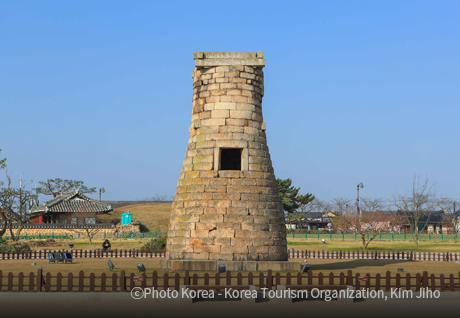
-
Gyeongju Historic Area
Gyeongju Historic Area is a significant historical site where the achievements and culture of the Silla Dynasty have been remarkably well-preserved. It is divided into five distinct zones based on their characteristics: the Namsan Mountain area, a center of Buddhist culture; the Wolseong Fortress area, the royal grounds of the Silla Dynasty; the Daereungwon Ancient Tomb area, a burial site of high-ranking officials, including the kings of the Silla Dynasty; the Hwangnyongsa Temple area, showing the essence of Silla Buddhism; and the Sanseong Fortress area, highlighting the capital’s defense system.
The Gyeongju Historic Area has a total of 52 designated cultural assets that are registered as World Cultural Heritages on November 2000. The most representative heritages include Gyeongju Poseokjeong Pavilion Site, Rock-carved Bodhisattva at Sinseonam Hermitage in Namsan Mountain, Donggung Palace & Wolji Pond, Cheomseongdae Observatory, Ancient Tombs in Hwangnam-ri, Daereungwon Ancient Tomb Complex, Hwangnyongsa Temple Site and Bunhwangsa Temple.
- Address: 757, Taejong-ro, Gyeongju-si, Gyeongsangbuk-do
-
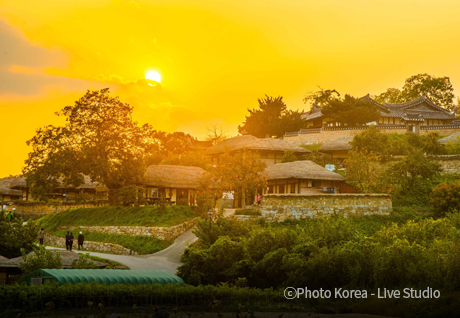
-
Gyeongju Yangdong Village
Gyeongju Yangdong Village is Korea’s largest traditional village, offering a glimpse into the cultural heritage of the Joseon Dynasty amid the stunning natural surroundings.
It is a prime example of a traditional yangban (the aristocratic class from the Joseon Dynasty) clan village that has been preserved for over 600 years. Recognized for its outstanding conservation of historic homes from the south-eastern region of Korea, the village was designated as Korea’s 10th UNESCO World Heritage Site in 2010.
Located at the entrance of the village, Yangdong Village Cultural Center showcases artifacts that illustrates the village’s history. Visitors can also participate in a variety of hands-on traditional cultural programs.
- Address: 91 Yangdongmaeuran-gil, Gangdong-myeon, Gyeongju-si, Gyeongsangbuk-do
- Tel: +82-54-762-2630
-
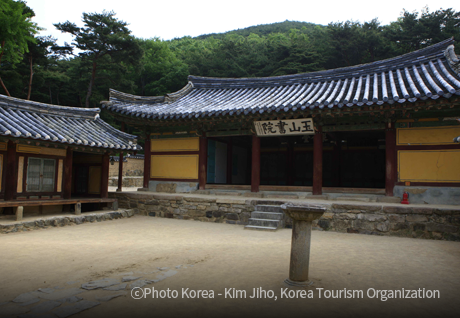
-
Oksanseowon Confucian Academy
Oksanseowon Confucian Academy was built to honor the academic achievements and virtues of Confucian scholar Yi Eon-jeok (1491-1553). Founded in 1572, it beautifully showcases a harmonious blend of academia and nature, making it a prime example of Korean Confucian Center. The academy’s distinctive architectural layout is truly remarkable. Dokrakdang Hall, which was used as both Yi Eon-jeok’s vacation retreat and study room, is located 700 meters to the north of Oksanseowon.
- Address: 216-27 Oksanseowon-gil, Angang-eup, Gyeongju-si, Gyeongsangbuk-do
- Tel: +82-54-761-2211
-
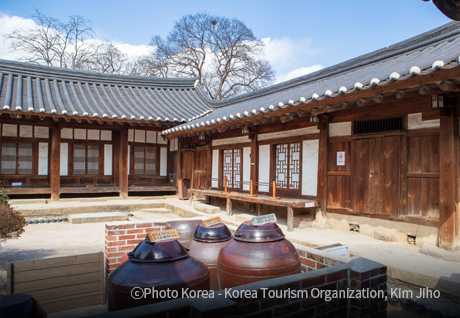
-
Gyeongju Gyochon Village
Gyeongju Gyochon Village is a traditional Hanok village that thrived during the era of the Gyeongju Choi Clan. For over 12 generations, this family produced many notable figures. Also known as ‘the rich Choi clan,’ they were admired for their generosity, especially in helping out local residents by their family motto: “Let no one starve to death within a 100-ri (approx. 40km) radius.”
Today, visitors can explore the remains of the Gyeongju Choi Clan’s old residence and enjoy a meal at Yoseokgung, a restaurant operated by a descendant of the Choi Clan. Nearby attractions include Gyerim Forest, Naemulwangneung Royal Tomb, and Gyeongjuhyanggyo Local Confucian School.
- Address: 39-2 Gyochon-gil, Gyo-dong, Gyeongju-si, Gyeongsangbuk-do
- Tel: +82-54-760-7880